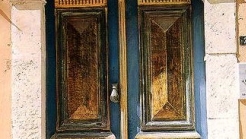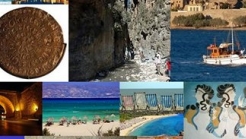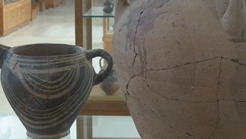

Greece
The Archaeological Museum Sitia began operating in 1984, one hundred years after the first excavations of the Italian Archaeological School. Largest and richest whole antiquities is considered to be the palace of Zakros were built with many and great findings, some of which are masterpieces of Minoan art.
The Archaeological Museum Sitia began operating in 1984, one hundred years after the first excavations of the Italian Archaeological School. Largest and richest whole antiquities is considered to be the palace of Zakros were built with many and great findings, some of which are masterpieces of Minoan art.
The museum is a complete unit, which has a storage and laboratory areas, offices for the scientific, administrative staff and small archaeological library. The findings cover a period about 4,000 years, from the late Neolithic to the late Roman Period and occur mainly in archeological excavations have revealed sets in areas.
Start the web browser is the vestibule, in the center of which exposed the famous ivory statue of the Minoan city of Paleokastro. Then set out the findings from the palace of Zakros were built and the area of: giant jars were, many decorative vessels and utensils, one could become with color decoration, artifacts miniaturisation.
Subsequently, presented findings from funerary sets of geometric and ancient tribal Sitia. Impressive is the sets of findings and Hellenistic Era Greek-Romain times in the fourth section of the Xirokambo, Ζiro, the banjo, the mansion of Long Megas Gialos, Kato Koufonisi etc.
The Archaeological Museum Sitia has arisen as a result of strenuous efforts of operators and the inhabitants of the region, with a view to accommodate the findings of province Sitia, a large part of which was transported to museums Agios Nikolaos and Heraklion.
The museum was opened in 1984.


The house Chronaki is an important monument of the city of Heraklion, which for years was forgotten by everyone and everything. Last many have attempted to deal with in order to show off this sleek architectural. Is the mansion known by two names: House Chronaki or otherwise Konaki Rasich Bey Asprak


An especially unique island, blessed with beautiful beaches, and also with a history depicted through the ages.


The Archaeological Museum Sitia began operating in 1984, one hundred years after the first excavations of the Italian Archaeological School. Largest and richest whole antiquities is considered to be the palace of Zakros were built with many and great findings, some of which are masterpieces of Minoan art.
1039 Ε 6061 01515 00